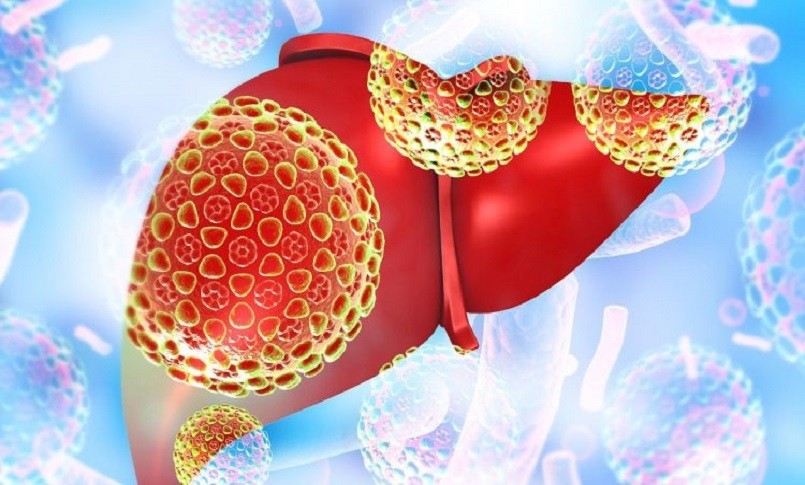There are over 300 million people in the world affected by it chronic form of hepatitis Bamong the first risk factors for liver cirrhosis e liver tumor. In patients affected by this chronic infection, the immune system is unable to eradicate the virus responsible for the disease, which continues to survive and reproduce inside the liver cells.
A group of researchers from Vita-Salute San Raffaele Hospital and Universitythanks to the close collaboration with the American start-up Asher Biotherapeuticshas tested for the first time in the world, in preclinical models, a molecule capable of reactivating the immune system against chronic hepatitis B.
Advertisements
The results, published in the prestigious scientific journal Science Translational Medicine, lay the foundations for the clinical development of an immunotherapy for this serious pathology. The study was coordinated by the professor Matteo Iannaconedirector of the Division of Immunology, Transplants and Infectious Diseases of the Irccs San Raffaele Hospital, returned to Italy after a long research experience in the United States, thanks to the Career Development Award from the Armenise-Harvard Foundation.
The hepatitis B virus and current therapies
The hepatitis B virus (HBV) is transmitted by contact with infected blood, sexually or from mother to child during childbirth. Unlike what happens when an adult contracts the virus, over 90% of children infected at birth develop the chronic form of hepatitis B. In patients affected by this chronic infection, the immune system is unable to eradicate the virus responsible for the disease, which continues to survive and reproduce within liver cells.
There is currently a preventative vaccine for the disease, but patients who are already affected cannot benefit from it. Scientific research is progressing considerably in the field of antivirals, for which San Raffaele is an international point of reference.
The research of Matteo Iannacone’s group, in close collaboration with the unit directed by the professor Luca Guidottideputy scientific director of the Institute, have in fact contributed in recent years to developing some of the antivirals now commonly used to treat the disease in its chronic form.
How to awaken the immune system: the San Raffaele proposal
What causes the ineffectiveness of the immune system and how can its action be reawakened? The researchers had already answered this question with some data published in Nature in 2019. The researchers had demonstrated, through a molecular analysis carried out thanks to intravital microscopy techniques, that T lymphocytes, cells of the immune system responsible for attacking the HBV virus , are unable to eradicate the infection and are dysfunctional from the moment they are activated.
The work of characterizing dysfunctional T lymphocytes had also allowed the San Raffaele researchers to identify molecules more suitable and effective for reawakening these cells. Among these is interleukin-2, a messenger molecule of the immune system, which acts as a sort of immunotherapy, already successfully tested both in cultured cells obtained from patient samples and in animal models.
Interleukin-2, unfortunately, if administered systemically, produces serious side effects: it increases the permeability of blood vessels, causing severe edema. This happens because the molecule is not only able to reach its target, the T lymphocytes, but also acts on Natural Killer cells – which induce toxicity, and also on regulatory cells which inhibit the immune response.
The new study
The results just published in the journal Science Translational Medicine add a piece to those published in 2019. Thanks to the collaboration with the company Asher Biotherapeutics which produces interleukin-2, the researchers managed to experiment with this molecule, developing an approach called ” cis-targeting”: interleukin-2, conjugated with a specific antibody, is able to target only T lymphocytes, activating them correctly against the disease.
“We have seen in mouse models of the disease that, by administering this type of immunotherapy, the T lymphocytes expand in number and increase their function, i.e. they release cytokines capable of inhibiting viral replication and eliminate the infected cells, effectively killing the virus ”, comments Professor Iannacone.
The results have therefore demonstrated, in preclinical models of hepatitis B and in the blood of healthy people, the safety, low toxicity and therapeutic efficacy of this innovative approach.
“In addition to antiviral approaches, it is possible to finally think about an immunotherapy strategy. The next step is to test this approach on humans, in combination with antivirals,” concludes the researcher.
The research was supported by the European Research Council (ERC), the AIRC Foundation for cancer research, the Ministry of Health and the Ministry of University and Research.
Nurse Times editorial team
Find out how to earn money by publishing your thesis on NurseTimes
The NEXT project is renewed and becomes NEXT 2.0: we publish the questionnaires and your theses
Upload your thesis: tesi.nursetimes.org
